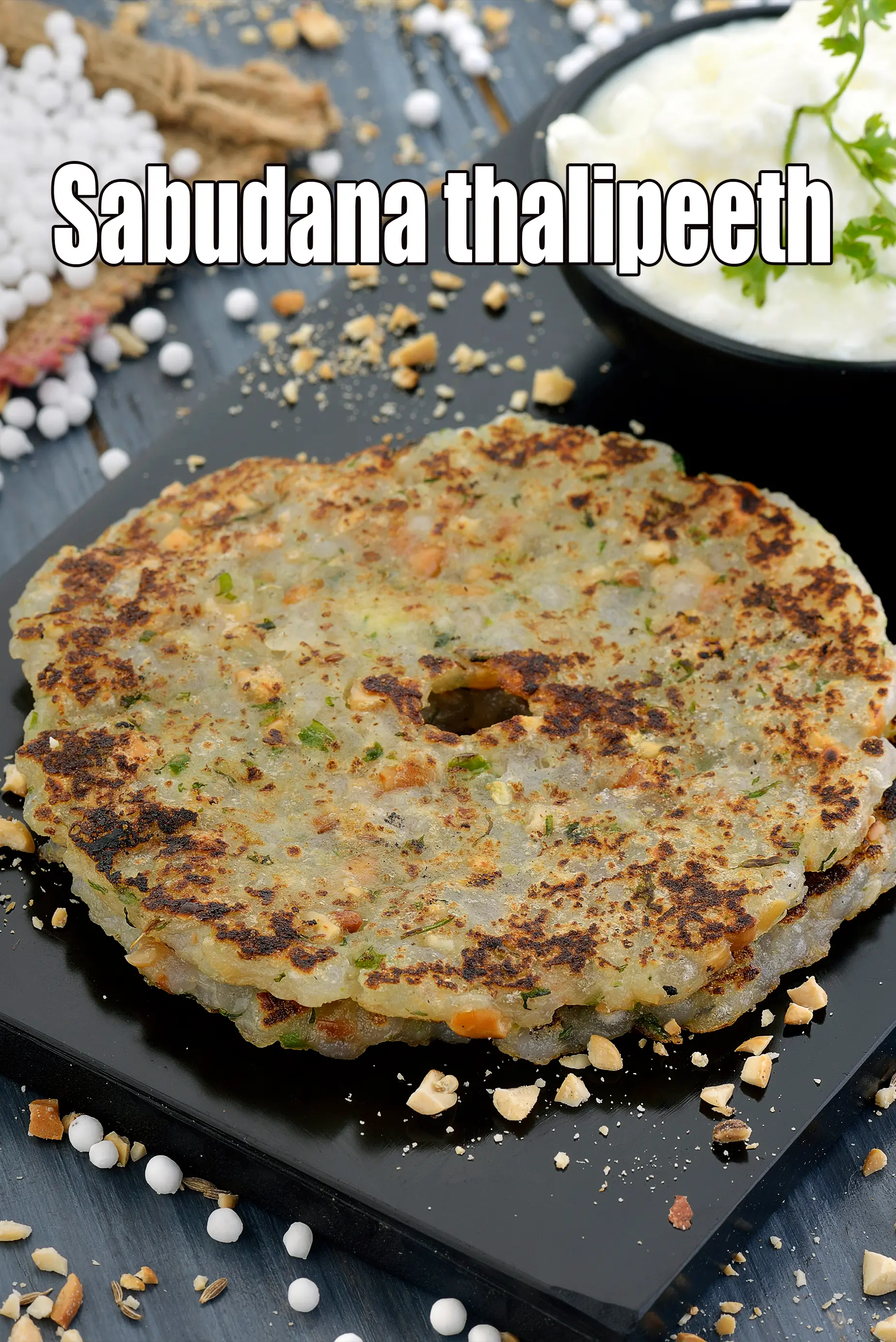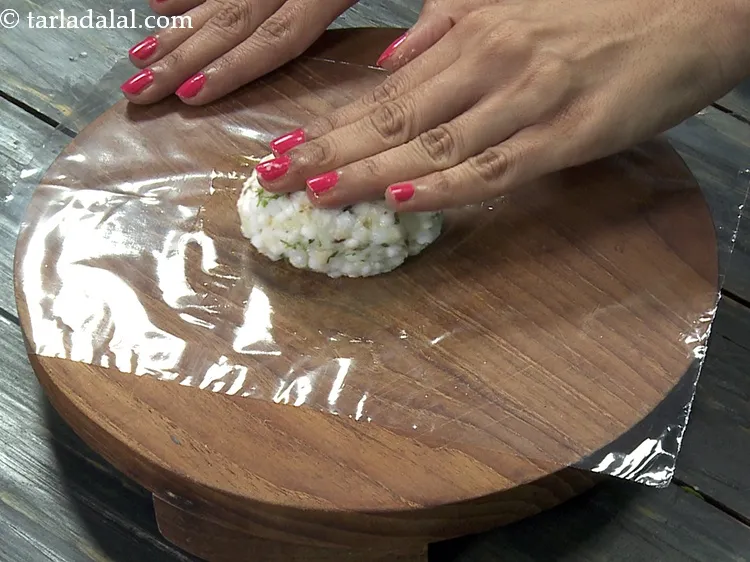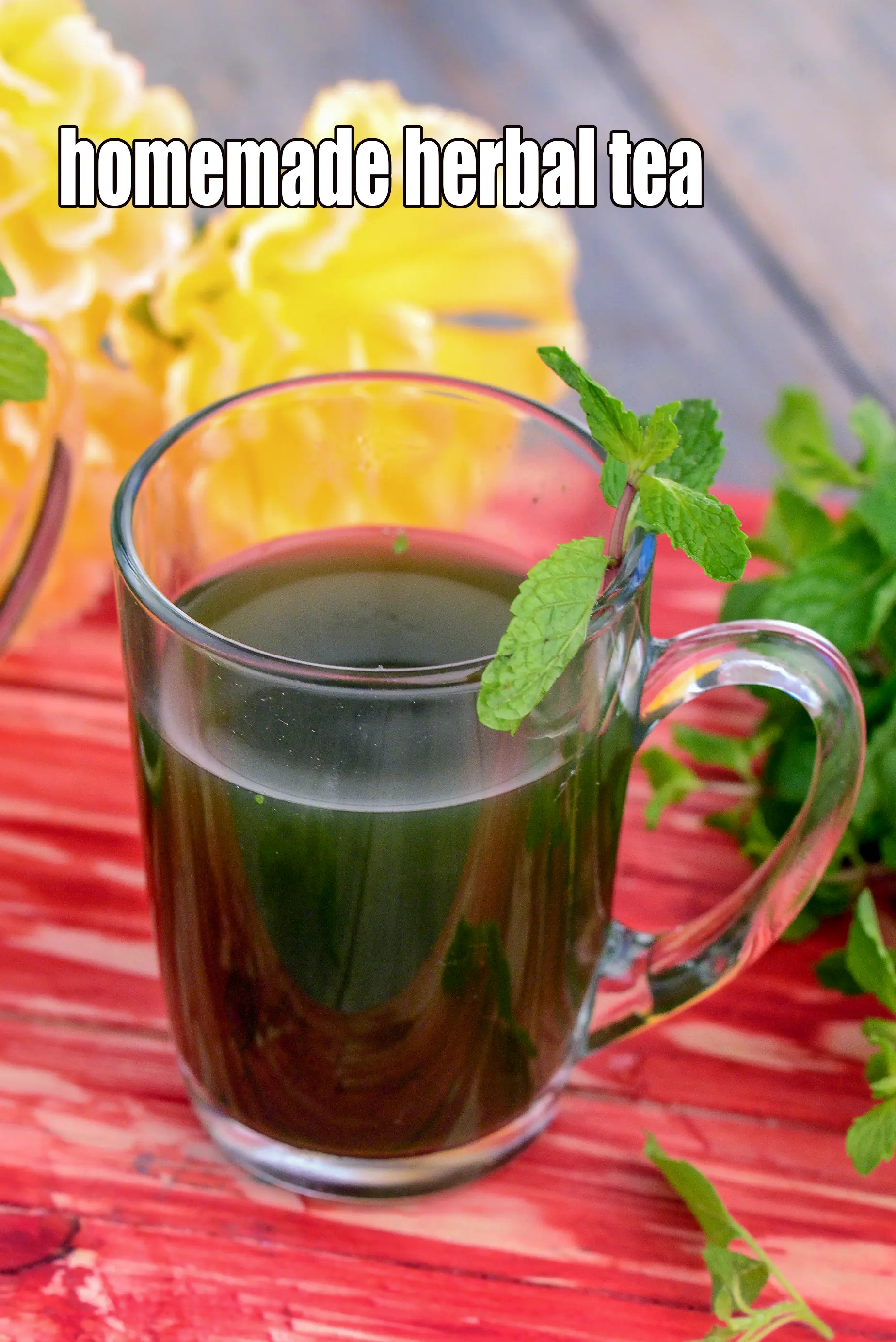You are here: Home> Cuisine > Indian Veg Recipes > Gujarati > Gujarati Faral, Faraal > Sabudana Thalipeeth, Upvas Vrat Recipe
sabudana thalipeeth recipe | upvas thalipeeth | sago thalipeeth for vrat | Indian farali thalipeeth |

Tarla Dalal
28 February, 2025

Table of Content
sabudana thalipeeth recipe | upvas thalipeeth | sago thalipeeth for vrat | Indian farali thalipeeth | with 46 amazing images.
sabudana thalipeeth recipe | upvas thalipeeth | sago thalipeeth for vrat | Indian farali thalipeeth can be considered as a snack and meal in itself too. Learn how to make upvas thalipeeth.
To make sabudana thalipeeth, soak the sabudana in enough water in a deep bowl overnight and drain well. Transfer the soaked sabudana and all the ingredients in a deep bowl and mix very well. Divide the mixture into 10 equal portions. Grease a plastic sheet with ¼ tsp of oil, place it on a clean, dry surface, put a portion of the dough on it and flatten it. Pat it with your fingers to form a 125 mm. (5”) diameter circle. Make a hole in the centre using your index finger. Remove the plastic sheet and place the circle on a hot greased non-stick tava (griddle) and cook using ½ tsp of oil till it turns golden brown in colour from both the sides. Repeat steps 4 to 6 to make 9 more thalipeeths. Serve immediately with sweet curds.
Thalipeeth, a sumptuous, traditional Maharashtrian snack, is made in a faral-friendly way in this recipe. We have used a dough of sabudana and mashed potatoes perked up with peanuts, green chillies and other flavour-givers to make upvas thalipeeth.
While the mixture for this sago thalipeeth for vrat and sabudana vada is the same, the cooking techniques are different. The former is flattened and cooked on a tava, while the latter is shaped into flat balls and deep fried, thus giving 2 recipes which are unique in texture in their own way.
When flattened and cooked on a tava, you get a tasty and filling Indian farali thalipeeth. This is sure to keep you energised on a fasting day. You can pair it with a bowl of dahi or peanut curd chutney. You can also try other faral recipes like the Rajgira Paneer Paratha or Potato Khichdi.
Tips for sabudana thaliepeth. 1. Soaking sago for the said time is very important as the sago has to be perfectly soaked and soft for this recipe. 2. While adding mashed potatoes, ensure that there is no moisture in them. Presence of moisture might not bind the mixture well. Also ensure that the potatoes are not hot. This might partially cook the sago grains and make the mixture sticky. 3. Use a thick plastic sheet as we have used. 4. Remember to grease the pan each time. 5. If you think that the thalipeeth is tearing while cooking, add little arrowroot flour or water chestnut flour (singhare ka atta) to the mixture. This helps in binding the sago mixture.
Enjoy sabudana thalipeeth recipe | upvas thalipeeth | sago thalipeeth for vrat | Indian farali thalipeeth | with step by step photos.
Sabudana Thalipeeth, Upvas Vrat Recipe recipe - How to make Sabudana Thalipeeth, Upvas Vrat Recipe
Tags
Preparation Time
15 Mins
Cooking Time
20 Mins
Total Time
35 Mins
Makes
10 thalipeeths
Ingredients
For Sabudana Thalipeeth
1 cup sago (sabudana)
1 cup boiled and mashed potatoes
1/4 cup roasted and coarsely crushed peanuts
1 tbsp sugar
1 tbsp finely chopped green chillies
1/2 tbsp cumin seeds (jeera)
2 tbsp finely chopped coriander (dhania)
rock salt (sendha namak) to taste
2 1/2 tsp oil
5 tsp oil for cooking
For Serving With Sabudana Thalipeeth
Method
For sabudana thalipeeth
- To make sabudana thalipeeth, soak the sabudana in enough water in a deep bowl overnight and drain well.
- Transfer the soaked sabudana and all the ingredients in a deep bowl and mix very well.
- Divide the mixture into 10 equal portions.
- Grease a plastic sheet with ¼ tsp of oil, place it on a clean, dry surface, put a portion of the dough on it and flatten it. Pat it with your fingers to form a 125 mm. (5”) diameter circle.
- Make a hole in the centre using your index finger.
- Remove the plastic sheet and place the circle on a hot greased non-stick tava (griddle) and cook using ½ tsp of oil till it turns golden brown in colour from both the sides.
- Repeat steps 4 to 6 to make 9 more thalipeeths.
- Serve the sabudana thalipeeth immediately with sweet curds.
sabudana thalipeeth recipe | upvas thalipeeth | sago thalipeeth for vrat | farali thalipeeth | Video by Tarla Dalal
Sabudana Thalipeeth, Upvas Vrat Recipe recipe with step by step photos
-
-
If you like sabudana thalipeeth, then also try other recipes for vrat like
- Sabudana Khichdi | maharashtrian sabudana khichdi | sago khichdi | with 26 amazing images.
- shakarkand ka halwa recipe | faral sweet potato halwa | navratri vrat ka halwa | upvas ka halwa | with 26 amazing images.
- healthy buckwheat dhokla recipe | kuttu dhokla | high fibre buckwheat dhokla | healthy dhokla - breakfast recipe | with 24 amazing images.
-
If you like sabudana thalipeeth, then also try other recipes for vrat like
-
- Sabudana thalieepth is made of 1 cup sago (sabudana), 1 cup boiled and mashed potatoes, 1/4 cup roasted and coarsely crushed peanuts, 1 tbsp sugar, 1 tbsp finely chopped green chillies, 1/2 tbsp cumin seeds (jeera), 2 tbsp finely chopped coriander (dhania), rock salt (sendha namak) to taste, 2 1/2 tsp oil brush (for greasing) and 5 tsp oil for cooking.
-
-
Sago is readily available at all grocery stores. Look for dry, even and white pearls of sago.

![]()
- It comes in different grades – small, medium and large; buy according to recipe requirement.
- Avoid if any yellowish shades are seen.
- Check the label thoroughly for date of packaging and expiry.
- Sometimes sago is partially pre-cooked. If so, it might not suit many recipes. Always check on that.
-
Sago is readily available at all grocery stores. Look for dry, even and white pearls of sago.
-
-
Take 1 cup of raw 1 cup sago (sabudana).
-1-193548.webp)
![]()
-
Put sabudana in a glass bowl of water and wash it with your hands. Not much dirt will come out.
-2-193548.webp)
![]()
-
Drain.
-3-193548.webp)
![]()
-
Then soak them in 1½ cups of water overnight or till they swell and turn soft.

![]()
-
Cover with a lid.
-5-193548.webp)
![]()
-
This is how sago looks after soaking. The sago has doubled in size and is soft. At this stage there should be no moisture in the sago grains.
-6-193548.webp)
![]()
-
Your sago must be well soaked. Test it by pressing between your fingers and they should get mashed. See image below. If it’s hard in the centre, then it has not been soaked well.
-7-193548.webp)
![]()
-
Take 1 cup of raw 1 cup sago (sabudana).
-
-
This is what peanuts look like. They are used extensively in fasting, faral recipes by Maharashtrians.
-1-193549.webp)
![]()
-
Roasting enhances the flavour of the peanuts. Hence, to roast add few peanuts to a hot pan.
-2-193549.webp)
![]()
-
Stir it frequently on a low to medium flame. NOTE : don't roast on a high flame as this will burn the peanuts and give it a bad taste.
-3-193549.webp)
![]()
-
Roast on low to medium flame till light brown and allow it to cool. Take care that it does not burn.
-4-193549.webp)
![]()
-
To crush them, shell them first. At times we remove only some of the skin and put in a mortar.
-5-193549.webp)
![]()
-
Crush them using a pestle to a coarse texture. You can also put them in a blender and pulse once only. Remember we want a coarse powder.
-6-193549.webp)
![]()
-
Store crushed peanuts in a jar to be used when required. Since i am making sabudana vada tomorrow, i prepared the crushed peanuts a day earlier.
-7-193549.webp)
![]()
-
This is what peanuts look like. They are used extensively in fasting, faral recipes by Maharashtrians.
-
-
How to make mashed potatoes? This is what potatoes look like.
-1-193550.webp)
![]()
-
First wash the potatoes.
-2-193550.webp)
![]()
-
Place potatoes in a flat dish in a pressure cooker covered with water.
-3-193550.webp)
![]()
-
Pressure cook for 2 to 3 whistles.
-4-193550.webp)
![]()
-
This is what the potatoes look like.
-5-193550.webp)
![]()
-
Cool and peel the potatoes with your fingers.
-6-193550.webp)
![]()
-
Mash them using a potato masher or heavy fork. Ensure that there are no lumps to get desired smoothness.
-7-193550.webp)
![]()
-
How to make mashed potatoes? This is what potatoes look like.
-
-
For the mixture for sabudana thalipeeth recipe | upvas thalipeeth | sago thalipeeth for vrat | Indian farali thalipeeth, transfer the soaked sabudana in a deep bowl.
-1-193551.webp)
![]()
-
Add 1 cup boiled and mashed potatoes. While adding mashed potatoes, ensure that there is no moisture in them. Presence of moisture might not bind the mixture well. Also ensure that the potatoes are not hot. This might partially cook the sago grains and make the mixture sticky.
-2-193551.webp)
![]()
-
Add 1/4 cup roasted and coarsely crushed peanuts. Coarsely crushed is necessary as they help in binding the sago grains and also absorb less oil while deep frying.
-3-193551.webp)
![]()
-
Add 1 tbsp finely chopped green chillies.
-4-193551.webp-4-193551.webp)
![]()
-
Add 1 tbsp sugar.
-5-193551.webp)
![]()
-
Add 2 tbsp finely chopped coriander (dhania). Avoid the addition of coriander if you do not consume it during fasting or upvas.
-6-193551.webp)
![]()
-
Add 1/2 tbsp cumin seeds (jeera). You can replace it with cumin seeds powder.

![]()
-
Add rock salt (sendha namak) to taste. We have used sendha namak as this is a upvas recipe. You can replace it with table salt if you wish to.
-8-193551.webp)
![]()
-
Mix very well.
-9-193551.webp)
![]()
-
The mixture for sabudana thalipeeth recipe | upvas thalipeeth | sago thalipeeth for vrat | Indian farali thalipeeth is ready.
-10-193551.webp)
![]()
-
For the mixture for sabudana thalipeeth recipe | upvas thalipeeth | sago thalipeeth for vrat | Indian farali thalipeeth, transfer the soaked sabudana in a deep bowl.
-
-
To make sabudana thalipeeth recipe | upvas thalipeeth | sago thalipeeth for vrat | Indian farali thalipeeth, divide the mixture into 10 equal portions.
-1-193552.webp)
![]()
-
Place a plastic sheet on a clean, dry surface. Use a thick plastic sheet as we have used.

![]()
-
Grease it with ¼ tsp of oil.

![]()
-
Put a portion of the mixture on it.

![]()
-
Flatten it with fingers.

![]()
-
Pat it with your fingers, while rolling it to form a 125 mm. (5”) diameter circle. Ensure to put uniform pressure all over the sabudana thalipeeth recipe | upvas thalipeeth | sago thalipeeth for vrat | Indian farali thalipeeth.

![]()
-
Make a hole in the centre using your index finger. This helps in uniform cooking in the centre too.
-7-193552.webp)
![]()
-
Remove the plastic sheet and place the circle on a hot greased non-stick tava (griddle).

![]()
-
Spread ½ tsp of oil along the edges and in the centre where we had made a hole.

![]()
-
Cook the thalipeeth till it turns golden brown in colour from one side and then turnover.

![]()
-
Cook on the other side too till it turns golden brown in colour.

![]()
-
Remove the sabudana thalipeeth recipe | upvas thalipeeth | sago thalipeeth for vrat | Indian farali thalipeeth in a plate. Be very careful while transferring the thalipeeth on a plate as it is very delicate and there are chances that it might tear. Prefer to use 2 flat ladles so it is easier to hold.

![]()
- Repeat steps 3 to 12 to make 9 more thalipeeths.
-
Serve sabudana thalipeeth recipe | upvas thalipeeth | sago thalipeeth for vrat | Indian farali thalipeeth immediately with sweet curds.
-14-193552.webp)
![]()
-
To make sabudana thalipeeth recipe | upvas thalipeeth | sago thalipeeth for vrat | Indian farali thalipeeth, divide the mixture into 10 equal portions.
-
-
Soaking sago for the said time is very important as the sago has to be perfectly soaked and soft for this recipe.
-1-193554.webp)
![]()
-
While adding mashed potatoes, ensure that there is no moisture in them. Presence of moisture might not bind the mixture well. Also ensure that the potatoes are not hot. This might partially cook the sago grains and make the mixture sticky.
-2-193554.webp)
![]()
-
Use a thick plastic sheet as we have used.

![]()
-
Remember to grease the tava each time.

![]()
-
If you think that the thalipeeth is tearing while cooking, add little arrowroot flour or water chestnut flour (singhoda ka atta) to the mixture. This helps in binding the sago mixture.

![]()
-
Soaking sago for the said time is very important as the sago has to be perfectly soaked and soft for this recipe.
-
-
Can I soak the sabudana for 4 hours?
Yes, you can soak the sabudana for 4 to 5 hours. Check if they are soft, you can use them. Else soak for another 2 to 3 hours. We suggest soaking them for at least 8 hours or overnight.
-
My sabudana is tearing while rolling and shaping. What can I do?
This is an indication that the mixture is very dry. Sprinkle a little water, mix well and then shape the thalipeeth. -
Can I boil potatoes in a microwave?
Yes, to reduce cooking time, you can boil potatoes in a microwave.
![]()
-
Is there a substitute to potatoes?
Potatoes are need for binding. So they are necessary. -
Can I make sabudana vada with this same mixture?
Yes, this same mixture can be used to make tasty sabudana vada.
-
Can I soak the sabudana for 4 hours?
Nutrient values (Abbrv)per plate
| Energy | 122 cal |
| Protein | 1.1 g |
| Carbohydrates | 17.5 g |
| Fiber | 0.5 g |
| Fat | 5.4 g |
| Cholesterol | 0 mg |
| Sodium | 2 mg |
Click here to view Calories for Sabudana Thalipeeth, Upvas Vrat Recipe
The Nutrient info is complete

nimesh
March 13, 2025, midnight
I was bored of the regular fasting foods so when I came across this recipe it was sounding interesting, I decided to try this and it was superb...






-1497.webp)

-1502.webp)

-17324.webp)
-1500.webp)


-17013.webp)












